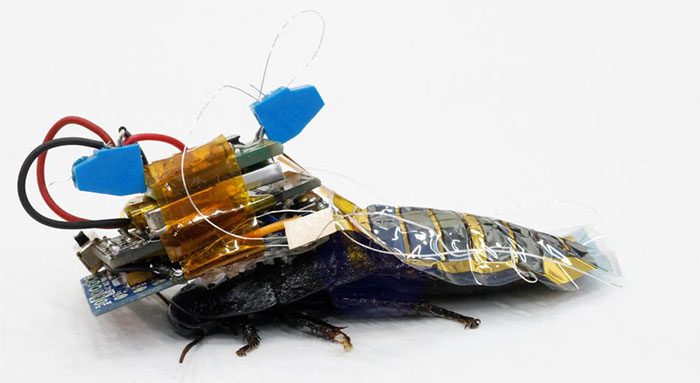In the event of a major earthquake where people may be trapped under collapsed debris, a swarm of robotic cockroaches could be an effective response force in locating victims.
According to Reuters, a group of Japanese scientists is researching a groundbreaking application that attaches solar-powered “backpacks” and electronic devices to cockroaches, remotely controlling their movements.

Electronic device attached to the back of a cockroach. (Photo: Reuters)
Scientist Kenjiro Fukuda and his colleagues at the Thin-Film Device Laboratory of the RIKEN research institute have developed a solar film that is just 4 micrometers thick, about 1/25 the thickness of a human hair, which can fit comfortably on the back of the insect.
This film allows the cockroach to move freely while the solar panel generates enough energy to process and send directional signals to the sensory organs on the cockroach’s hind legs.
Fukuda explains: “If we use a fully robotic system, the batteries will drain quickly, and the operating time will be shortened. In contrast, an advantage of the robotic cockroach is that they are already in motion, so the amount of electricity needed for operation is minimal.”
Fukuda’s team chose the Madagascar cockroach for their experiments due to its large size, which can carry the equipment without being hindered by wings.
One of the challenges scientists face during the experiments is miniaturizing components so that the cockroaches can move more easily or to allow for the attachment of sensors or even cameras. Scientist Yujiro Kakei mentioned that he created a sensor backpack from components worth 5,000 yen purchased from the electronics district in Akihabara, Tokyo.
After completing their mission, the device attached to the animal can be removed, allowing the cockroach to return to its normal life. The maturation period of this species lasts 4 months, and they can live up to 5 years.


















































